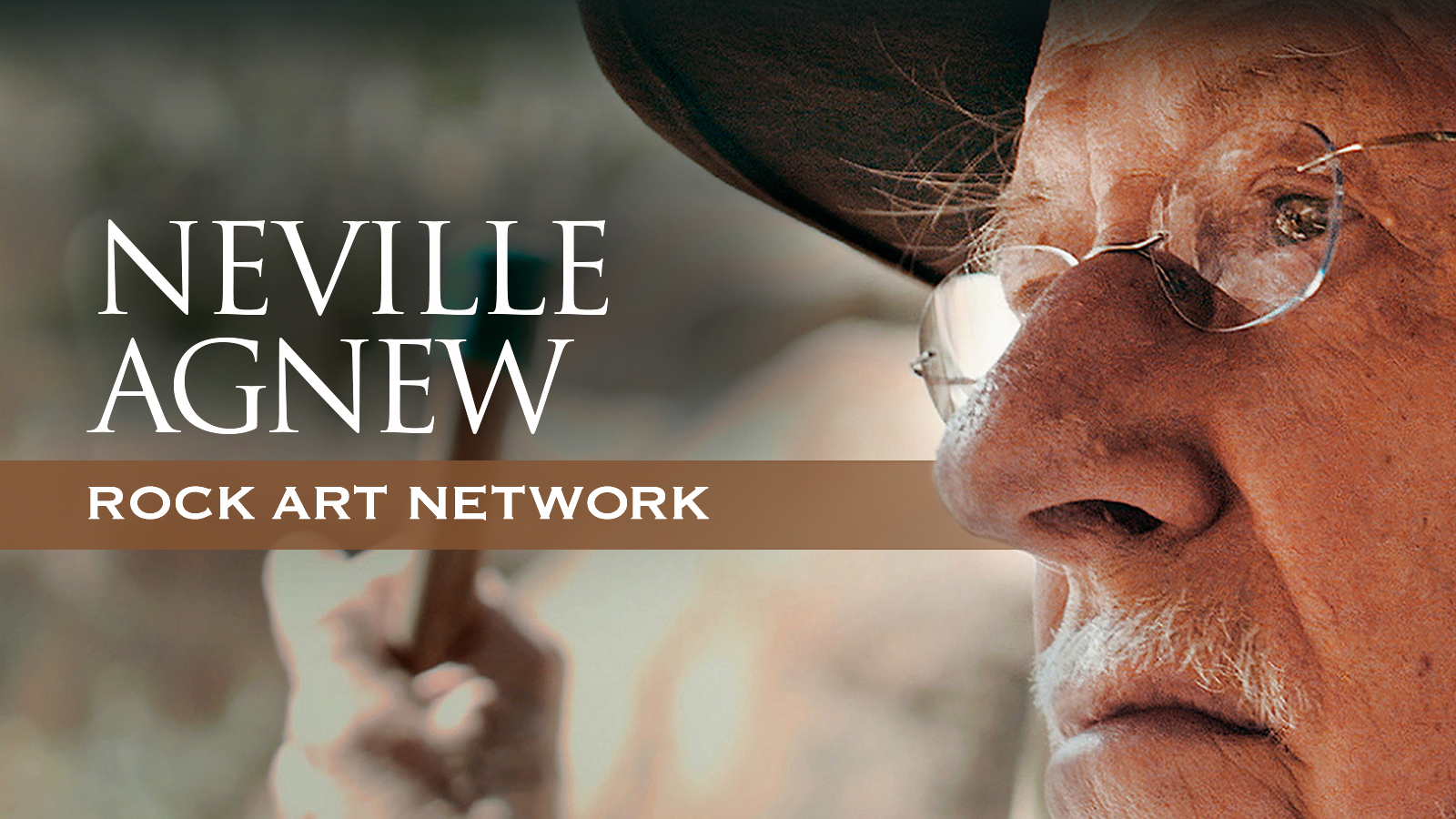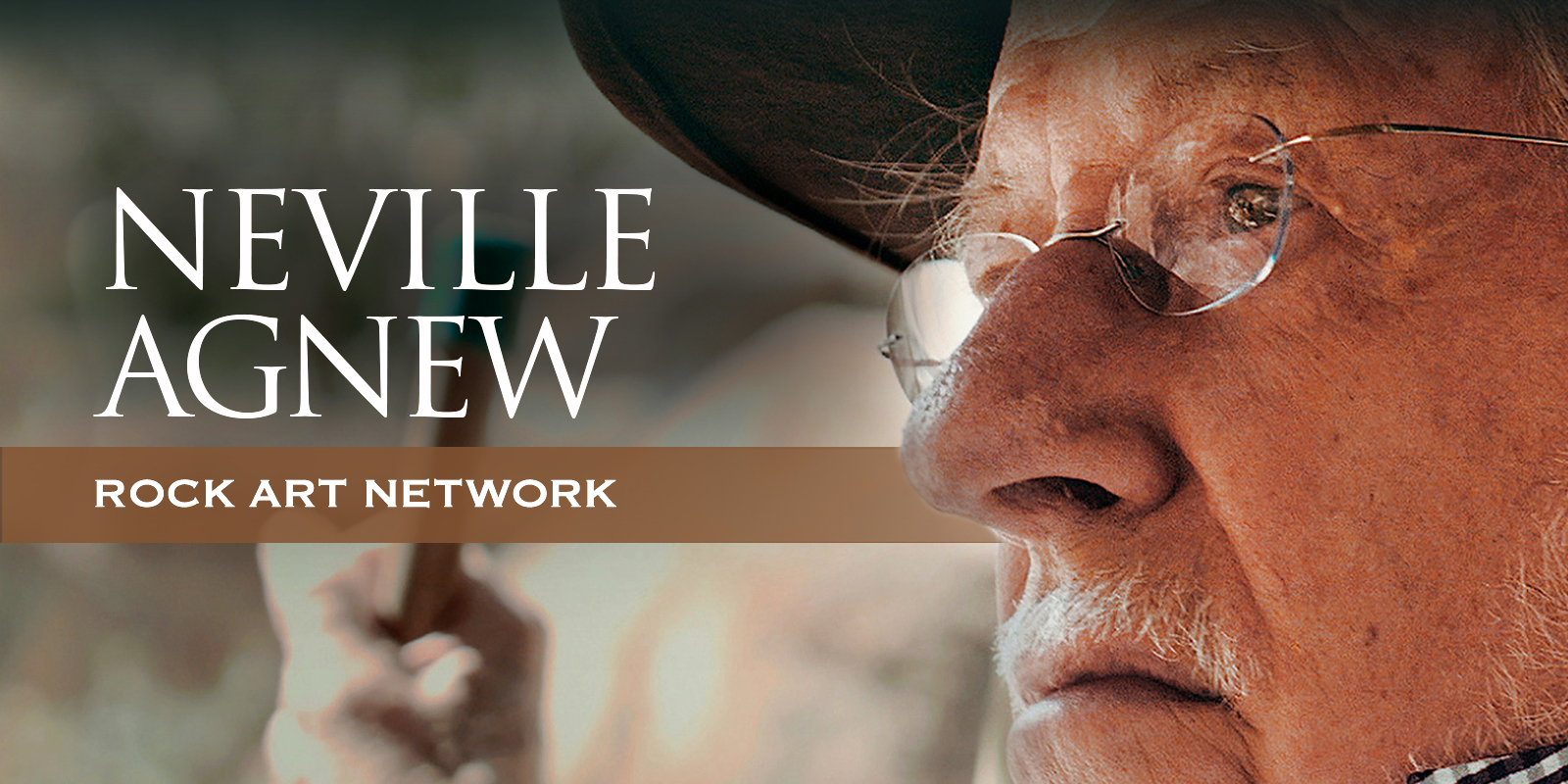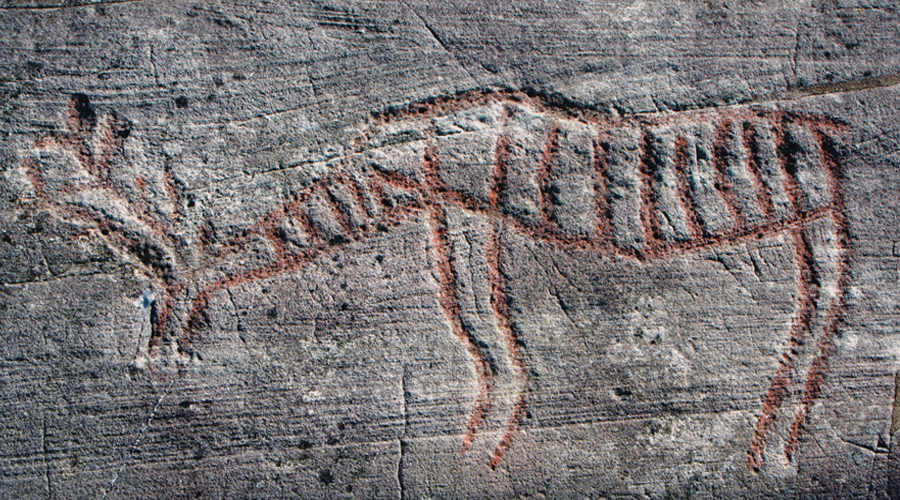


Neville Agnew
Profile
Senior Principal Project Specialist - Getty Conservation Institute
Neville Agnew
Google
LinkedIn
Instagram
Dr. Agnew has had professional experience in the conservation of rock art, dinosaur fossil footprints, shipwrecks, and adobe structures. His association with conservation in China has resulted in a number of awards. Dr. Agnew organized the conservation theme at the Fifth World Archaeological Congress (WAC-5) and coedited the subsequent publication.
Currently, he is working on the collaboration with Egypt’s Supreme Council of Antiquities for the Valley of the Queens and Tutankhamen’s Tomb projects and leads the Southern African Rock Art Project (SARAP).
Rock Art Network
→ Discover more about the Rock Art Network→ Members and affiliated institutions of the Rock Art Network
Latest Article
→ A complex ritualised landscape: Newly discovered later prehistoric rock art and monuments in Ynys Môn, North Wales
by
George Nash
5/09/2024 Recent Articles
→ Sigubudu: Paintings of people with guns in the northern uKhahlamba-Drakensberg
by Aron Mazel
22/07/2024
→ Prehistomania
by Richard Kuba
13/06/2024
→ Women Hunters in Indian Rock Art
by Meenakshi Dubey-Pathak
8/03/2024
→ Vingen Rock Art in Norway at Risk
by Rock Art Network
6/02/2024
→ Professor emeritus Knut Arne Helskog is awarded the King's Medal of Merit
by Rock Art Network
14/12/2023
→ Escaped slaves, rock art and resistance in the Cape Colony, South Africa
by Sam Challis
5/12/2023
→ Markwe Cave, Zimbabwe
by Aron Mazel
30/11/2023
→ Art and Influence, Presence and Navigation in Southern African Forager Landscapes
by Sam Challis
21/11/2023
→ History debunked: Endeavours in rewriting the San past from the Indigenous rock art archive
by Sam Challis
15/11/2023
→ Post-Traumatic Stress Disorder (PTSD) and forager theories of disease in nineteenth century southern Africa, and its implications for understanding images of conflict in San rock art
by Sam Challis
10/11/2023
→ Ancient Aboriginal rock carvings vandalised
by Rock Art Network
6/11/2023
→
Two NSW men found guilty of using oily handprints to damage sacred Uluru cave art
by Rock Art Network
3/11/2023
→
Reflecting on the abundance of sheep and baboon paintings in Junction Shelter, Didima Gorge, South Africa
by Aron Mazel
2/11/2023
→
Rock Art Sites Protection and Guides Training In Satpura Tiger Reserve
by Meenakshi Dubey-Pathak
26/09/2023
→
Rock art and frontier conflict in Southeast Asia: Insights from direct radiocarbon ages for the large human figures of Gua Sireh, Sarawak
by Paul Taçon
24/08/2023
→
Beginning of a Rock Art Journey - Recording Paintings in the uKhahlamba-Drakensberg 1979 - 1980
by Aron Mazel
13/06/2023
→
Murujuga's rock art is at risk – where is the outrage?
by Paul Taçon
5/06/2023
→
Identifying the artists of some of Australia's earliest art
by Paul Taçon
15/03/2023
→ Between Monument and Water: Burial rites, location of megalithic monuments and rock art of the Kilmartin Valley, Argyll, Western Scotland (Stage 1 of the Motifs and Monuments Project)
by George Nash
14/03/2023
→ Rock Art Training and Recording Petroglyphs in Laos
by Noel Hidalgo Tan
10/02/2023
→ Unlocking a hidden landscape
by George Nash
01/02/2023
→ 'Powerful Images - Indian rock art from its earliest times to recent times'
by Meenakshi Dubey-Pathak, Pilar Fatás Monforte
29/11/2022
→ Signalling and Performance: Ancient Rock Art in Britain and Ireland
by Aron Mazel, George Nash
21/09/2022
→ Histories of Australian Rock Art Research
by Paul S.C. Taçon, Sally K. May, Ursula K. Frederick, Jo McDonald
07/07/2022
→ Rock Art and Tribal Art: Madhya Pradesh
by Meenakshi Dubey-Pathak
26/07/2022
→ Marra Wonga: Archaeological and contemporary First Nations interpretations of one of central Queensland’s largest rock art sites
by Paul Taçon
20/07/2022
→ David Coulson MBE
by David Coulson
16 June 2022
→
Extraordinary Back-to-Back Human and Animal Figures in the Art of Western Arnhem Land, Australia: One of the World's Largest Assemblages
by Paul Taçon
25 April 2022
→
An online course by SEAMEO Regional Centre for Archaeology and Fine Arts (SPAFA)
by Noel Hidalgo Tan
20 April 2022
→
Cupules and Vulvas in the Alwar area, Rajasthan
by Meenakshi Dubey-Pathak
14 March 2022
→
Color Engenders Life - Hunter-Gatherer Rock Art in the Lower Pecos Canyonlands
by Carolyn Boyd & Pilar Fatás
02 March 2022
→
David Coulson receives RGS Cherry Kearton Award
by David Coulson
07 February 2022
→
Vandalised petroglyphs in Texas
by Johannes H. N. Loubser
06 February 2022
→
Hand Stencils in Chhattisgarh
by Meenakshi Dubey-Pathak
05 February 2022
→
And then they were gone: Destruction of the Good Hope 1 rock paintings
by Aron Mazel
28 January 2022
→
Early masterpieces: San hunter-gatherer shaded paintings of the uKhahlamba-Drakensberg and surrounding areas
by Aron Mazel
8 September 2021
→
Aїr Mountains Safari - Sahara
by David Coulson
17 August 2021
→
The Neolithic rock art passage tombs of Anglesey as brand-new virtual tours
by Ffion Reynolds
21 June 2021
→ More Rock Art Network Articles
by
George Nash
5/09/2024 Recent Articles
→ Sigubudu: Paintings of people with guns in the northern uKhahlamba-Drakensberg
by Aron Mazel
22/07/2024
by Richard Kuba
13/06/2024
by Meenakshi Dubey-Pathak
8/03/2024
by Rock Art Network
6/02/2024
by Rock Art Network
14/12/2023
by Sam Challis
5/12/2023
by Aron Mazel
30/11/2023
by Sam Challis
21/11/2023
by Sam Challis
15/11/2023
by Sam Challis
10/11/2023
by Rock Art Network
6/11/2023
by Rock Art Network
3/11/2023
by Aron Mazel
2/11/2023
by Meenakshi Dubey-Pathak
26/09/2023
by Paul Taçon
24/08/2023
by Aron Mazel
13/06/2023
by Paul Taçon
5/06/2023
by Paul Taçon
15/03/2023
by George Nash
14/03/2023
by Noel Hidalgo Tan
10/02/2023
by George Nash
01/02/2023
by Meenakshi Dubey-Pathak, Pilar Fatás Monforte
29/11/2022
by Aron Mazel, George Nash
21/09/2022
by Paul S.C. Taçon, Sally K. May, Ursula K. Frederick, Jo McDonald
07/07/2022
by Meenakshi Dubey-Pathak
26/07/2022
by Paul Taçon
20/07/2022
by David Coulson
16 June 2022
by Paul Taçon
25 April 2022
by Noel Hidalgo Tan
20 April 2022
by Meenakshi Dubey-Pathak
14 March 2022
by Carolyn Boyd & Pilar Fatás
02 March 2022
by David Coulson
07 February 2022
by Johannes H. N. Loubser
06 February 2022
by Meenakshi Dubey-Pathak
05 February 2022
by Aron Mazel
28 January 2022
by Aron Mazel
8 September 2021
by David Coulson
17 August 2021
by Ffion Reynolds
21 June 2021
◼ LATEST ARTICLE

◼ RECENT ARTICLES

→ Sigubudu: Paintings of people with guns in the northern uKhahlamba-Drakensberg
by Aron Mazel
22/07/2024
→ Prehistomania
by Richard Kuba
13/06/2024
→ Women Hunters in Indian Rock Art
by Meenakshi Dubey-Pathak
8/03/2024
→ Vingen Rock Art in Norway at Risk
by Rock Art Network
6/02/2024
→ Professor emeritus Knut Arne Helskog is awarded the King's Medal of Merit
by Rock Art Network
14/12/2023
→ Escaped slaves, rock art and resistance in the Cape Colony, South Africa
by Sam Challis
5/12/2023
→ Markwe Cave, Zimbabwe
by Aron Mazel
30/11/2023
→ Art and Influence, Presence and Navigation in Southern African Forager Landscapes
by Sam Challis
21/11/2023
→ History debunked: Endeavours in rewriting the San past from the Indigenous rock art archive
by Sam Challis
15/11/2023
→ Post-Traumatic Stress Disorder (PTSD) and forager theories of disease in nineteenth century southern Africa, and its implications for understanding images of conflict in San rock art
by Sam Challis
10/11/2023
→ Ancient Aboriginal rock carvings vandalised
by Rock Art Network
6/11/2023
→
Two NSW men found guilty of using oily handprints to damage sacred Uluru cave art
by Rock Art Network
3/11/2023
→
Reflecting on the abundance of sheep and baboon paintings in Junction Shelter, Didima Gorge, South Africa
by Aron Mazel
2/11/2023
→
Rock Art Sites Protection and Guides Training In Satpura Tiger Reserve
by Meenakshi Dubey-Pathak
26/09/2023
→
Rock art and frontier conflict in Southeast Asia: Insights from direct radiocarbon ages for the large human figures of Gua Sireh, Sarawak
by Paul Taçon
24/08/2023
→
Beginning of a Rock Art Journey - Recording Paintings in the uKhahlamba-Drakensberg 1979 - 1980
by Aron Mazel
13/06/2023
→
Murujuga's rock art is at risk – where is the outrage?
by Paul Taçon
5/06/2023
→
Identifying the artists of some of Australia's earliest art
by Paul Taçon
15/03/2023
→ Between Monument and Water: Burial rites, location of megalithic monuments and rock art of the Kilmartin Valley, Argyll, Western Scotland (Stage 1 of the Motifs and Monuments Project)
by George Nash
14/03/2023
→ Rock Art Training and Recording Petroglyphs in Laos
by Noel Hidalgo Tan
10/02/2023
→ Unlocking a hidden landscape
by George Nash
01/02/2023
→ 'Powerful Images - Indian rock art from its earliest times to recent times'
by Meenakshi Dubey-Pathak, Pilar Fatás Monforte
29/11/2022
→ Signalling and Performance: Ancient Rock Art in Britain and Ireland
by Aron Mazel, George Nash
21/09/2022
→ Histories of Australian Rock Art Research
by Paul S.C. Taçon, Sally K. May, Ursula K. Frederick, Jo McDonald
07/07/2022
→ Rock Art and Tribal Art: Madhya Pradesh
by Meenakshi Dubey-Pathak
26/07/2022
→ Marra Wonga: Archaeological and contemporary First Nations interpretations of one of central Queensland’s largest rock art sites
by Paul Taçon
20/07/2022
→ David Coulson MBE
by David Coulson
16 June 2022
→
Extraordinary Back-to-Back Human and Animal Figures in the Art of Western Arnhem Land, Australia: One of the World's Largest Assemblages
by Paul Taçon
25 April 2022
→
An online course by SEAMEO Regional Centre for Archaeology and Fine Arts (SPAFA)
by Noel Hidalgo Tan
20 April 2022
→
Cupules and Vulvas in the Alwar area, Rajasthan
by Meenakshi Dubey-Pathak
14 March 2022
→
Color Engenders Life - Hunter-Gatherer Rock Art in the Lower Pecos Canyonlands
by Carolyn Boyd & Pilar Fatás
02 March 2022
→
David Coulson receives RGS Cherry Kearton Award
by David Coulson
07 February 2022
→
Vandalised petroglyphs in Texas
by Johannes H. N. Loubser
06 February 2022
→
Hand Stencils in Chhattisgarh
by Meenakshi Dubey-Pathak
05 February 2022
→
And then they were gone: Destruction of the Good Hope 1 rock paintings
by Aron Mazel
28 January 2022
→
Early masterpieces: San hunter-gatherer shaded paintings of the uKhahlamba-Drakensberg and surrounding areas
by Aron Mazel
8 September 2021
→
Aїr Mountains Safari - Sahara
by David Coulson
17 August 2021
→
The Neolithic rock art passage tombs of Anglesey as brand-new virtual tours
by Ffion Reynolds
21 June 2021
→ More Rock Art Network Articles
by Aron Mazel
22/07/2024
by Richard Kuba
13/06/2024
by Meenakshi Dubey-Pathak
8/03/2024
by Rock Art Network
6/02/2024
by Rock Art Network
14/12/2023
by Sam Challis
5/12/2023
by Aron Mazel
30/11/2023
by Sam Challis
21/11/2023
by Sam Challis
15/11/2023
by Sam Challis
10/11/2023
by Rock Art Network
6/11/2023
by Rock Art Network
3/11/2023
by Aron Mazel
2/11/2023
by Meenakshi Dubey-Pathak
26/09/2023
by Paul Taçon
24/08/2023
by Aron Mazel
13/06/2023
by Paul Taçon
5/06/2023
by Paul Taçon
15/03/2023
by George Nash
14/03/2023
by Noel Hidalgo Tan
10/02/2023
by George Nash
01/02/2023
by Meenakshi Dubey-Pathak, Pilar Fatás Monforte
29/11/2022
by Aron Mazel, George Nash
21/09/2022
by Paul S.C. Taçon, Sally K. May, Ursula K. Frederick, Jo McDonald
07/07/2022
by Meenakshi Dubey-Pathak
26/07/2022
by Paul Taçon
20/07/2022
by David Coulson
16 June 2022
by Paul Taçon
25 April 2022
by Noel Hidalgo Tan
20 April 2022
by Meenakshi Dubey-Pathak
14 March 2022
by Carolyn Boyd & Pilar Fatás
02 March 2022
by David Coulson
07 February 2022
by Johannes H. N. Loubser
06 February 2022
by Meenakshi Dubey-Pathak
05 February 2022
by Aron Mazel
28 January 2022
by Aron Mazel
8 September 2021
by David Coulson
17 August 2021
by Ffion Reynolds
21 June 2021
Support our work & become a
Friend of the Foundation
Friend of the Foundation
◼ LATEST ARTICLE

◼ RECENT ARTICLES

→ Sigubudu: Paintings of people with guns in the northern uKhahlamba-Drakensberg
by Aron Mazel
22/07/2024
→ Prehistomania
by Richard Kuba
13/06/2024
→ Women Hunters in Indian Rock Art
by Meenakshi Dubey-Pathak
8/03/2024
→ Vingen Rock Art in Norway at Risk
by Rock Art Network
6/02/2024
→ Professor emeritus Knut Arne Helskog is awarded the King's Medal of Merit
by Rock Art Network
14/12/2023
→ Escaped slaves, rock art and resistance in the Cape Colony, South Africa
by Sam Challis
5/12/2023
→ Markwe Cave, Zimbabwe
by Aron Mazel
30/11/2023
→ Art and Influence, Presence and Navigation in Southern African Forager Landscapes
by Sam Challis
21/11/2023
→ History debunked: Endeavours in rewriting the San past from the Indigenous rock art archive
by Sam Challis
15/11/2023
→ Post-Traumatic Stress Disorder (PTSD) and forager theories of disease in nineteenth century southern Africa, and its implications for understanding images of conflict in San rock art
by Sam Challis
10/11/2023
→ Ancient Aboriginal rock carvings vandalised
by Rock Art Network
6/11/2023
→
Two NSW men found guilty of using oily handprints to damage sacred Uluru cave art
by Rock Art Network
3/11/2023
→
Reflecting on the abundance of sheep and baboon paintings in Junction Shelter, Didima Gorge, South Africa
by Aron Mazel
2/11/2023
→
Rock Art Sites Protection and Guides Training In Satpura Tiger Reserve
by Meenakshi Dubey-Pathak
26/09/2023
→
Rock art and frontier conflict in Southeast Asia: Insights from direct radiocarbon ages for the large human figures of Gua Sireh, Sarawak
by Paul Taçon
24/08/2023
→
Beginning of a Rock Art Journey - Recording Paintings in the uKhahlamba-Drakensberg 1979 - 1980
by Aron Mazel
13/06/2023
→
Murujuga's rock art is at risk – where is the outrage?
by Paul Taçon
5/06/2023
→
Identifying the artists of some of Australia's earliest art
by Paul Taçon
15/03/2023
→ Between Monument and Water: Burial rites, location of megalithic monuments and rock art of the Kilmartin Valley, Argyll, Western Scotland (Stage 1 of the Motifs and Monuments Project)
by George Nash
14/03/2023
→ Rock Art Training and Recording Petroglyphs in Laos
by Noel Hidalgo Tan
10/02/2023
→ Unlocking a hidden landscape
by George Nash
01/02/2023
→ 'Powerful Images - Indian rock art from its earliest times to recent times'
by Meenakshi Dubey-Pathak, Pilar Fatás Monforte
29/11/2022
→ Signalling and Performance: Ancient Rock Art in Britain and Ireland
by Aron Mazel, George Nash
21/09/2022
→ Histories of Australian Rock Art Research
by Paul S.C. Taçon, Sally K. May, Ursula K. Frederick, Jo McDonald
07/07/2022
→ Rock Art and Tribal Art: Madhya Pradesh
by Meenakshi Dubey-Pathak
26/07/2022
→ Marra Wonga: Archaeological and contemporary First Nations interpretations of one of central Queensland’s largest rock art sites
by Paul Taçon
20/07/2022
→ David Coulson MBE
by David Coulson
16 June 2022
→
Extraordinary Back-to-Back Human and Animal Figures in the Art of Western Arnhem Land, Australia: One of the World's Largest Assemblages
by Paul Taçon
25 April 2022
→
An online course by SEAMEO Regional Centre for Archaeology and Fine Arts (SPAFA)
by Noel Hidalgo Tan
20 April 2022
→
Cupules and Vulvas in the Alwar area, Rajasthan
by Meenakshi Dubey-Pathak
14 March 2022
→
Color Engenders Life - Hunter-Gatherer Rock Art in the Lower Pecos Canyonlands
by Carolyn Boyd & Pilar Fatás
02 March 2022
→
David Coulson receives RGS Cherry Kearton Award
by David Coulson
07 February 2022
→
Vandalised petroglyphs in Texas
by Johannes H. N. Loubser
06 February 2022
→
Hand Stencils in Chhattisgarh
by Meenakshi Dubey-Pathak
05 February 2022
→
And then they were gone: Destruction of the Good Hope 1 rock paintings
by Aron Mazel
28 January 2022
→
Early masterpieces: San hunter-gatherer shaded paintings of the uKhahlamba-Drakensberg and surrounding areas
by Aron Mazel
8 September 2021
→
Aїr Mountains Safari - Sahara
by David Coulson
17 August 2021
→
The Neolithic rock art passage tombs of Anglesey as brand-new virtual tours
by Ffion Reynolds
21 June 2021
→ More Rock Art Network Articles
by Aron Mazel
22/07/2024
by Richard Kuba
13/06/2024
by Meenakshi Dubey-Pathak
8/03/2024
by Rock Art Network
6/02/2024
by Rock Art Network
14/12/2023
by Sam Challis
5/12/2023
by Aron Mazel
30/11/2023
by Sam Challis
21/11/2023
by Sam Challis
15/11/2023
by Sam Challis
10/11/2023
by Rock Art Network
6/11/2023
by Rock Art Network
3/11/2023
by Aron Mazel
2/11/2023
by Meenakshi Dubey-Pathak
26/09/2023
by Paul Taçon
24/08/2023
by Aron Mazel
13/06/2023
by Paul Taçon
5/06/2023
by Paul Taçon
15/03/2023
by George Nash
14/03/2023
by Noel Hidalgo Tan
10/02/2023
by George Nash
01/02/2023
by Meenakshi Dubey-Pathak, Pilar Fatás Monforte
29/11/2022
by Aron Mazel, George Nash
21/09/2022
by Paul S.C. Taçon, Sally K. May, Ursula K. Frederick, Jo McDonald
07/07/2022
by Meenakshi Dubey-Pathak
26/07/2022
by Paul Taçon
20/07/2022
by David Coulson
16 June 2022
by Paul Taçon
25 April 2022
by Noel Hidalgo Tan
20 April 2022
by Meenakshi Dubey-Pathak
14 March 2022
by Carolyn Boyd & Pilar Fatás
02 March 2022
by David Coulson
07 February 2022
by Johannes H. N. Loubser
06 February 2022
by Meenakshi Dubey-Pathak
05 February 2022
by Aron Mazel
28 January 2022
by Aron Mazel
8 September 2021
by David Coulson
17 August 2021
by Ffion Reynolds
21 June 2021
Support our work & become a
Friend of the Foundation
Friend of the Foundation















